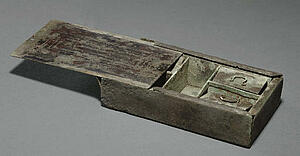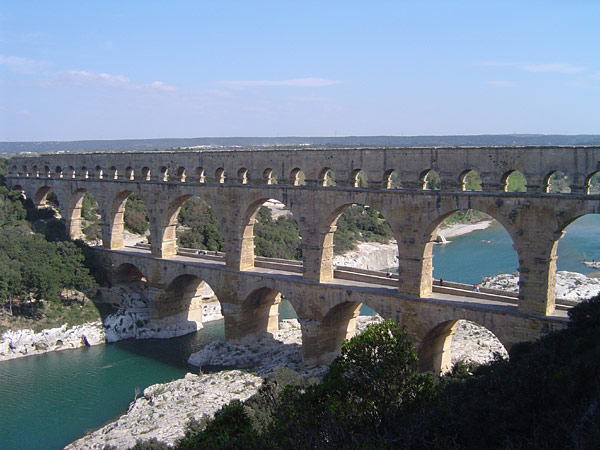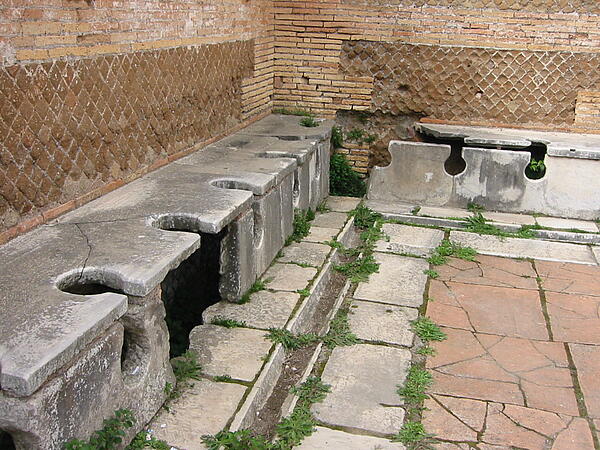Ancient Rome: Health and Medicine

Ancient Rome, just like Greece and Egypt before it, dedicated a huge amount of time to the study of medicine and health. Rather than focusing on cures, the Romans preferred to seek out new methods of disease prevention. However, this manifested itself as an emphasis on public health facilities as opposed to the development of medical theories, as was the case in Ancient Greece.
Although many of the discoveries made by the Romans were not necessarily considered pure medicine, the lack of hygiene that plagued Roman citizens meant any attempt at improving public health had a significant impact on society.
Despite the differences between the way the two civilisations approach medicine and health, the Romans sourced a lot of their information from the Ancient Greeks. This was aided by the relationship between the two; having first come into contact around 500 BC, part of Greece had actually become a division of the roman Empire by 146 BC.
In fact, by 27 BC, the control of Greece and other lands around the Mediterranean was seized by the Romans. As such, many of their medical theories reflected the ideas of the Greeks, but reflected Rome’s more practical approach to research and development.
Instead, the Romans were concerned with directly improving quality of life of their empire, and this applied to all aspects of life. This was effectively summed up by Greek geographer Strabo, who claimed:
“The Greeks are famous for their cities and in this they aimed at beauty. The Romans excelled in those things which the Greeks took little interest in such as the building of roads, aqueducts and sewers.”
Cicero, the famous writer, mirrored this opinion:
“The Greeks held the geometer in the highest honour, and, to them, no-one came before mathematicians. But we Romans have established as the limit of this art, its usefulness in measuring and reckoning.”
During the early years of the Roman Empire there were no practicing medical professionals. Instead, the head of each household was given the responsibility of gaining enough knowledge of herbal cures to make it possible for them to treat illnesses and injuries at home.
Pliny, another Roman writer, reflected this in his description of Roman medicine:
“Unwashed wool supplies very many remedies… it is applied… with honey to old sores. Wounds it heals if dipped in wine or vinegar… yolks of eggs… are taken for dysentery with the ash of their shells, poppy juice and wine.”
Once the Roman Empire had expanded into Greek territory their attitude to medicine began to slowly change. Initially, many of its doctors were relocated to Italy, with some (as prisoners of war) purchased by wealthy Romans to work in their household. Eventually, some of these physicians were able to buy their own freedom and set up practices in Rome. However, many Romans were uncertain of their trustworthiness.
Pliny wrote:
“There is no doubt that all these physicians in their hunt of popularity by means of some new idea, did not hesitate to buy it with our lives. Medicine changes everyday, and we are swept along on the puffs of the clever brains of the Greeks… as if thousands of people do not live without physicians - though not, of course, without medicine.”
Despite these concerns, many Greek physicians were actually supported by the Emperor, making them incredibly popular among the Roman public. In fact, Pliny wrote about how Thessalus, a popular physician, was more popular at the time than any of the famous actors or chariot riders.
On the other hand, there were still many Romans who invested more in ensuring their own fitness rather than on physicians and their cures, believing that those who were physically fit were more likely to be able to fight an illness.
The Romans as a civilisation also believed that improved public health systems would ensure their success; Romans believed that illnesses were caused naturally and that unclean water and sewage could cause bad health. Public health services were developed to ensure the health of the wealthy and to secure the continued labour of the poorer classes. In fact, the Romans are considered by many to have been the first civilisation to introduced public health services that spanned the classes.

The belief of the Romans in the importance of hygiene resulted in many cities, forts and villas in Rome being built in what were considered the healthiest areas.
Scholar and writer Marcus Varro wrote:
“When building a house or farm… care should be taken where there are swaps in the neighbourhood, because certain tiny creatures which cannot be seen by the eyes breed there. These float through the air and enter the body by the mouth and nose and cause serious disease.”
Of course, the health of Rome’s legions was also considered a top priority as the empire’s reign was linked to their success. In fact, a huge amount of emphasis was placed on legionnaires having access to clean water and they were encouraged to keep fit, while officers were told to camp away from swamps so they would only drink clean water. Additionally, it was believed that they could pick up diseases if they stayed in the same place for too long, so legions were regularly moved.
Cities, forts and towns were built as close to fresh springs as possible, though water was transported in when these places began to grow. The water supply in Rome was particularly important as it was the capital city, and it had its own Water Commissioner - Julius Frontinus - appointed in 97 AD. The city grew so large the an estimated 1,000 million litres of water were transported to Rome each day.
Public baths were another important place for the Roman public, who put great emphasis on personal hygiene. Similarly, toilets were round in many Roman houses, as well as on the streets, so they were able to be used by all classes. In fact, by 315 AD it is believed that Rome had 144 public toilets that were all flushed by clean running water. Toilets were also located within forts and, thanks to the development of sewers, were served by an effective drainage system.
According to Pliny, many Romans believed sewer systems were the Romans biggest achievement. The sewers were designed so seven rivers would flow through them and flush away any sewage. This made it possible for the cities and it’s important facilities to stay hygienic.
See also:

Cities, villas and forts in Rome were built in healthy places, as the Romans knew the difference between a good place to build and less suitable places.
Marcus Varro, a scholar and writer, describes this process:
"When building a house or farm special care should be taken to place it at the foot of a wooded hill where it is exposed to health-giving winds. Care should be taken where there are swamps in the neighbourhood, because certain tiny creatures which cannot be seen by the eyes breed there. These float through the air and enter the body by the mouth and nose and cause serious disease."
Columella, another Roman, describes the agricultural perspective:
"There should be no marshes near buildings, for marshes give off poisonous vapours during the hot period of the summer. At this time, they give birth to animals with mischief-making stings which fly at us in thick swarms."
The health of Rome’s legions was naturally considered very important as without them, the Roman Empire would fall. A lot of emphasis was placed on legionnaires having access to clean water and keeping fit , while officers were discouraged from camping near swamps so they would not drink the fetid water. They were also moved around regularly as it was feared they may pick up the existing diseases if they stayed in the same place for too long.
The Romans valued clean water very much, writes the architect Vitruvius:
“We must take great care in searching for springs and, in selecting them, keeping in mind the health of the people.”
Cities, towns and forts were all built near fresh springs. Though when these grew, water needed to be brought in from further away. Naturally, as the population grew, the need for clean water did too. As the empire’s capital city, Rome had to have a water supply that would make a good impression. This was designed by Julius Frontinus who was appointed the Water Commissioner in 97 AD. An estimated 1,000 million litres of water a day was carried into Rome.
Personal hygiene was also a constant issue in the Romans lifestyle, which placed an important factor onto the public baths.
There were also toilets in Roman houses and on streets - something which was also a part of other civilisations but were designed to show wealth. By 315 AD Rome was said to have had 144 public toilets all flushed clean by running water. All forts had toilets, and to complement them an effective drainage system was needed. According to the Roman writer Pliny, many Romans believed that Rome sewers were the city’s biggest achievement.
Seven rivers were designed to flow through the city’s sewers and flush any sewage out. Military hospitals also had a focus on hygiene importance, as the Romans believed injured soldiers would recover quicker in a clean environment.
Anatomy
Ancient Rome made significant contributions to the field of anatomy, building upon the earlier work of Greek physicians and anatomists. Here are some of the key teachings of ancient Rome in the field of anatomy:
Human Dissection: Roman physicians were known to have conducted human dissections, which was a practice that was banned in some other cultures at the time. This allowed them to gain a deeper understanding of human anatomy.
Galen's Anatomy: Claudius Galen, who moved from Greece to Rome in 162 C.E., became an expert on anatomy by dissecting animals and applying his knowledge to humans, making significant contributions to the field of anatomy. His series of works on human anatomy was widely influential and was used as a medical textbook for centuries.
The Circulatory System: Galen was also the first to describe the circulatory system in detail. He observed that the arteries and veins were connected, and he also noted that the pulse was created by the heart.
Surgical Techniques: Roman physicians developed many surgical techniques, including amputation and cauterization, which were used to treat a variety of medical conditions.
See also: Ancient Rome
MLA Citation/Reference
"Ancient Rome: Health and Medicine". HistoryLearning.com. 2024. Web.
